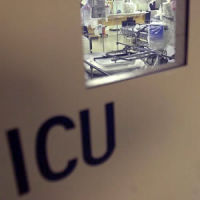An Editorial in the journal Chest emphasises the need to develop highly accurate, flexible methods for identifying patients with septic shock to ensure these patients are appropriately treated and hospitals are reliably assessed for treating these patients.
Sepsis is now the most costly hospital condition and the most common diagnosis among patients receiving intensive care. Given its healthcare burden, high mortality, and evidence showing that an early sepsis treatment bundle significantly improves patient outcomes, the Centers for Medicare and Medicaid Services have adopted sepsis care as part of its core inpatient performance measurement programme.
In the Editorial, authors Michael W. Sjoding, MD, and Robert C. Hyzy, MD, FCCP, both from the Institute of Healthcare Policy and Innovation, University of Michigan, discuss some issues related to inpatient admissions and billing methods. They write: "Concern has been raised that shifts in how inpatient admissions have been billed over time may have distorted the findings of multiple studies showing that sepsis incidence has increased whereas case fatality rates have declined. Nationally, if financial pressure to improve reimbursement leads to sepsis upcoding among patients who do not meet criteria, sepsis incidence would falsely appear to increase and mortality to decline, even if true sepsis incidence and outcomes were unchanged."
These issues are further explored in the study by Kadri and colleagues, which is also published in Chest. Kadri's team analysed 6.5 million adult hospitalisations from 2005 to 2014 at 27 academic hospitals to calculate trends in septic shock incidence and mortality over time. The team developed a non-ICD-9-CM (International Classification of Diseases, Ninth Revision, Clinical Modification)-code-based clinical algorithm for identifying septic shock cases. In addition to a blood culture order and antibiotic administration, their clinical surveillance definition required that patients receive vasopressor support for two or more consecutive days. The team then compared septic shock incidence and mortality derived from this clinical definition with those derived from the septic shock ICD-9-CM billing code.
"The most disconcerting result of the study was the presence of only moderate overlap in patients between definitions," note Drs. Sjoding and Hyzy. Among the 6.5 million hospitalisations, 44,651 patients with septic shock were identified by both definitions, whereas 54,661 patients were only identified by the clinical definition and 37,669 were only identified by the ICD-9-CM code. For healthcare systems interested in tracking hospital performance and outcomes in patients with septic shock, "this is troubling news", Drs. Sjoding and Hyzy say. Patients identified by either definition are likely to have had septic shock, based on their equivalently high positive predictive values > 80%, the doctors continue.
"Unfortunately, this study shows how a significant number of patients with septic shock may be misclassified by septic shock administrative billing codes as not having septic shock," according to the Editorial.
Source: CHEST
References:
Sjoding MW, Hyzy RC. (2017) Septic Shock Surveillance: Critically Important but Not Straightforward. Chest. Feb;151(2):247-248. doi: 10.1016/j.chest.2016.08.1433.
Latest Articles
Sepsis, septic shock, intensive care, patient outcomes
An Editorial in the journal Chest emphasises the need to develop highly accurate, flexible methods for identifying patients with septic shock to ensure these patients are appropriately treated and hospitals are reliably assessed for treating these patient



























